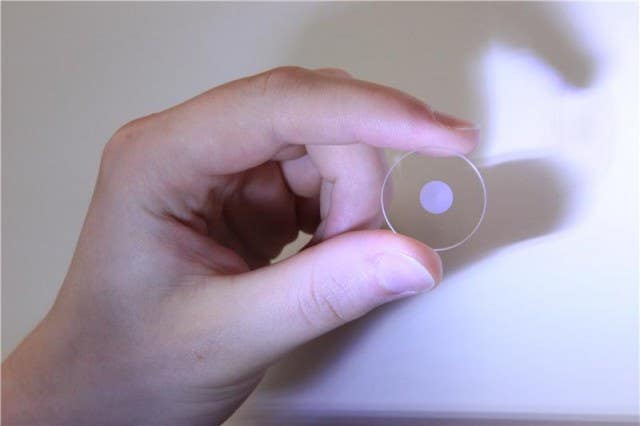Tiny 5D optical disc stores 500TB of data for billions of years
Hard drives and flash storage have gotten more reliable over the years, but only on a human timescale. What if we need longer data storage.

[Nov 2, 2021: Ryan Whitwam]
This type of data storage uses three layers of nanoscale dots in a glass disc. (CREDIT: University of Southampton)
Hard drives and flash storage have gotten more reliable over the years, but only on a human timescale. What if we need data storage that lasts longer? Decades? Millennia? The key to that vision might be 5D optical storage, which has a data density 10,000 times that of a Blu-ray disc. But it’s always been far too slow to write data onto glass plates in this way—until now. A new technique developed at the University of Southampton speeds up the process dramatically, without impacting the reliability of the data.
This type of data storage uses three layers of nanoscale dots in a glass disc. The size, orientation, and position (in three dimensions) of the dots gives you the five “dimensions” used to encode data. Researchers say that a 5D disc could remain readable after 13.8 billion years, but it would be surprising if anyone was even around to read them at that point. In the shorter term, 5D optical media could also survive after being heated to 1,000 degrees Celsius. You can see an earlier, smaller version of the disc above.
Related Stories
This is not the first time 5G optical data storage has popped up. It was just impractically slow before. Data is added to the discs with lasers, but if the laser moves too fast, the disc’s structural integrity is compromised. The technique devised by doctoral researcher Yuhao Lei uses a femtosecond laser with a high repetition rate. The process starts with a seeding pulse that creates a nanovoid, but the fast pulse doesn’t need to actually write any data. The repeated weak pulses leverage a phenomenon known as near-field enhancement to sculpt the nanostructures in a more gentle way.
The study reported a maximum data rate of one million voxels per second. (CREDIT: University of Southampton)
The researchers evaluated laser pulses at a variety of power levels, finding a level that sped up writing without damaging the silica glass disc. The study reported a maximum data rate of one million voxels per second, but each bit requires several voxels in 5D optical systems. That works out to a data rate of about 230 kilobytes per second. At that point, it becomes feasible to fill one of the discs, which have an estimated capacity of 500TB. It would take about two months to write this much data, after which it cannot be changed.
This work is still in the early stages, but the team managed to write and retrieve 5GB of text data using a 5D optical medium. All you need to read the stored data is a microscope and polarizer, and it should be readable for eons. We might not have anything interesting enough that needs to be saved for a few billion years, but maybe we will someday.
Like these kind of feel good stories? Get the Brighter Side of News' newsletter.
Tags: #New_Innovations, #Data_Strorage, #Computer_Memory, #Optical_Disc, #Science, #Technology, #The_Brighter_Side_of_News
Joseph Shavit
Head Science News Writer | Communicating Innovation & Discovery
Based in Los Angeles, Joseph Shavit is an accomplished science journalist, head science news writer and co-founder at The Brighter Side of News, where he translates cutting-edge discoveries into compelling stories for a broad audience. With a strong background spanning science, business, product management, media leadership, and entrepreneurship, Joseph brings a unique perspective to science communication. His expertise allows him to uncover the intersection of technological advancements and market potential, shedding light on how groundbreaking research evolves into transformative products and industries.



